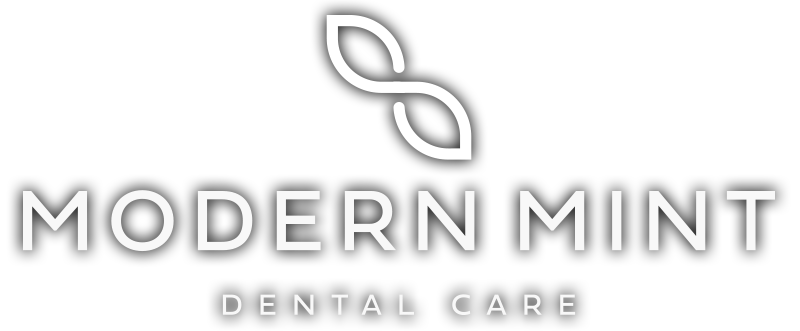Dental providers have placed dental implants since the mid-1960s, and since then, many things have changed. Some of the advancements in the field of implantology include better techniques and adjunctive medications that have increased patient experience and success rates. Additionally, new technologies have been developed to assist in the planning and execution of surgeries. Thankfully, we no longer have to rely on outdated methods or guesswork.
Why Dental Implants?
Dental implants may be the best treatment when saving a tooth is no longer an option. A dental implant is a special titanium screw placed in the jaw, and a special implant crown is placed on top of the implant to function as your new tooth. Implants are so important and beneficial because they allow for forces to be directly applied to your jaw, which promotes healthy bone. Without an implant or tooth, bone loss can occur over time, which can cause a host of issues, such as other teeth drifting into the space.
Implantology has drastically advanced in recent years to improve the process, outcomes, and healing.
The two most significant advancements in implantology include the introduction of cone beam computed tomography (CBCT) and intra-oral scanners. Let’s break down what each piece of technology brings to the field of dentistry by starting with the CBCT machine.
Cone Beam Computed Tomography (CBCT)
A CBCT machine has catapulted our understanding and visualization of head and neck anatomy. The CBCT can take a 3D image of the jaw and provide important measurements like bone amount, bone quality, nerve location, and an overall picture of the structure of a patient’s mouth. Having such precise information and measurements gives the provider extreme confidence in preparing a patient for an implant. In addition, the exact measurements that a CBCT provides can help the provider to determine a course of action and the ability to choose a perfect implant for the patient’s specific scenario. With the ability to know this information, we believe that CBCT is now the standard of care.
Intra-Oral Scanners
The second vital component of placing dental implants has been the introduction of the intra-oral scanner. An intra-oral scanner is a special device that looks like a wand and has a tiny tooth-sized camera at the end of it. The intra-oral scanner takes hundreds of pictures per second and provides over 1,000 reference points, creating a three-dimensional rendition of the scanned area. After a scan is completed, the provider has a 3D version of the patient’s mouth that can be digitally manipulated for both the patient and provider to see the end result before getting started with treatment. Amazing!
The 2 Digital Files Now Create a Total Picture of the Mouth
Once a CBCT and an intra-oral scan have been completed, the next step begins. The two digital files of the patient, one that represents the bone and teeth (from the CBCT) and the other that represents the gums and teeth (from the intra-oral scan), are combined to give a total picture of the mouth. Since the teeth are represented in both digital files, we can merge them in special dental software to begin planning the surgery with unmatched accuracy.
Now for the Surgical Guides
In order to help the provider execute a perfect surgery, they can create a patient-specific tool called a surgical guide. In the past, surgeons have placed implants free-hand. Sometimes this technique is the only option, especially when an implant needs to be placed on the same day the tooth is removed. However, to be able to place the implant in a preplanned and precise location, the use of a surgical guide is needed. A surgical guide allows the dentist to place the implant at a specific depth and a specific angulation. Surgical guides are created in combination with the digital files of the patient to help plan the site of an implant. These guides are unique to the patient and their specific surgery and give the provider another tool to assist in the successful placement of implants.
The benefit of having your dentist create your surgical guide is that they know exactly what to look for, what your case should look like, and how the outcome should be – it’s an aspect of extremely personalized dentistry that is very exciting. With the innovation of software to integrate the CBCT image with the intra-oral scan, your dentist can digitally design a surgical guide that will assist them with the perfect implant placement. The guide can be 3D printed to match the shape of the implant site and can be printed in less than 30 minutes! The integration of three-dimensional scanning, designing, and printing creates endless possibilities for successful dental surgery.
After the surgery has been planned, executed and the surgical site has healed, the implant will receive a crown on top of it to match your current smile. This is another process your dentist and their team will accomplish using the latest and greatest technology.
Why Should My General Dentist Place My Dental Implant?
There are two reasons why having your general dentist place your dental implant can be beneficial, assuming they have received additional training in implantology.
- First, your dentist knows your specific case, history, and needs. With such enormous advances in technology, your general dentist can keep an eye on your overall health and determine when an implant may be right for you. Then, make that surgery happen accurately, quickly, and efficiently.
- Secondly, general dentists who have been properly trained in implantology understand the importance of a technique called restorative-driven implantology, or “crown-down dentistry.” The idea behind crown-down dentistry is having a holistic plan of what the final result (or implant crown) should look like and planning an implant to support that. This can be accomplished with the advancements of digital dentistry by your general dentist instead of visiting a separate provider for the implant and then returning to your dentist for the final restoration.
Keeping the entire process under one provider will enable the dentist to focus on a successful surgery and outcome. Visit us at Modern Mint Dental Care by calling 720-853-0350, emailing contact@modernmintdental.com, or book online.




